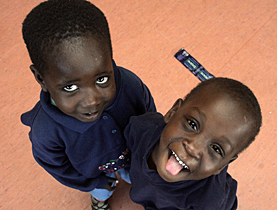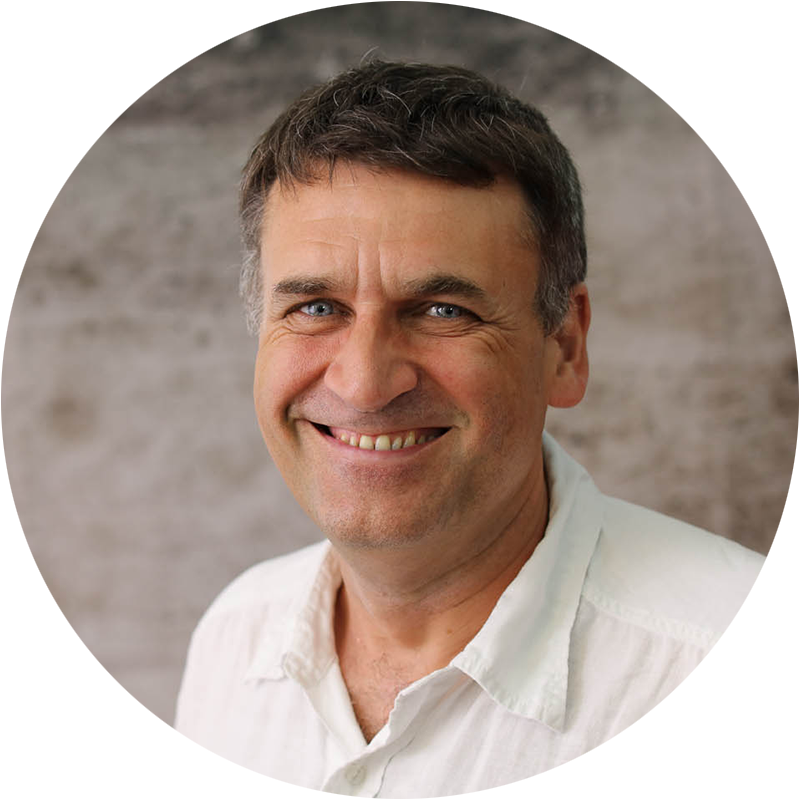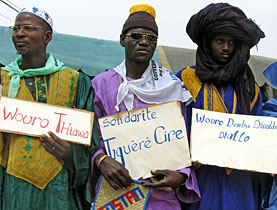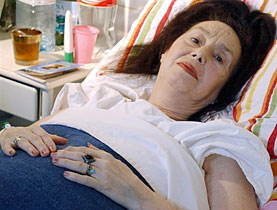Africa obtains low-cost fertility treatment

A Swiss-based foundation is offering fertility treatment in developing countries for $300 (SFr310), providing hope for thousands of women.
The foundation has set up what it considers low-cost in-vitro fertilization (IVF) centres in Tanzania and South Africa, with a third opening in Sudan in October – nations where childlessness carries a huge social stigma.
Africa’s high levels of infertility may come as a surprise given its traditionally strong birth rate. According to a 2004 World Health Organization report, more than 186 million married women of reproductive age in developing countries suffer from primary or secondary infertility.
The infertility rate among women aged 15 to 49 years old was higher than four per cent in six of the 47 countries surveyed. The highest levels were in sub-Saharan Africa, with 10.5 per cent in the Central African Republic and 7.3 per cent in Cameroon.
Secondary infertility (difficulty in having children following one or more pregnancies) affected 35.8 per cent of women in Uganda, 33.7 per cent in the Central African Republic and 33.5 per cent in Ivory Coast. In comparison, ten to 15 per cent of women suffer from the condition in Latin America.
Reasons for the increased levels of primary and secondary fertility include the prevalence of sexually transmitted diseases, malnutrition and lack of hygiene, as well as female genital mutilation.
Social stigma
“In certain regions, infertility is considered a real stigma. A woman who cannot procreate – independent of the fact of whether it is down to her or her husband – is very often rejected by society,” said Luca Gianaroli, director of the International Institute of Reproductive Medicine in Lugano, in the Italian-speaking canton of Ticino.
“Often they are only able to survive on charity handouts or through prostitution, and the percentage of suicides among women considered sterile is very high,” said the Italian doctor, who is also president of the European Society of Human Reproduction and Embryology.
“This was why we decided that it was the right time for these populations to benefit from the methods that we have helped to develop,” he added.
The result was the Low Cost IVF Foundation, which was set up by Gianaroli and three other leading experts in assisted reproduction – the Australians Alan Trounson and Ian Cooke and the Finn Outi Hovatta – in 2007. It is based near Lugano.
Centres have since opened in Arusha in Tanzania and in Cape Town in South Africa. A third will open its doors in Khartoum, Sudan, next month.
IVF for $300
The main problem is funding, as IVF can easily run to SFr10,000 per treatment in Europe and the United States.
“We had to rethink the methodologies, simplify the techniques and reduce the clinical indications, which means that not every patient can undergo these treatments,” explained Gianaroli.
For example, less expensive medications are used for ovarian stimulation than the genetically engineered “recombined” follicle stimulating hormones preferred by western clinics. The complex incubators in which the embryos grow before they are transferred to the womb have been replaced by small plastic capsules.
“In western countries, around 90 per cent of the laboratory equipment is only used by around ten per cent of the infertile couples. By disposing of this ten per cent we could eliminate much of these high costs,” said the Italian gynaecologist.
“Furthermore, we have acquired disposable material in reasonable quantities and we have bypassed the European market, sourcing, for example, from the Indian one instead. Medical personnel salaries and infrastructure costs are much lower in Tanzania or Sudan than our own.”
Thus the centres can offer fertility treatment for around $300. “This sum is high for the average population but it still becomes interesting if local governments want to provide real help,” said Gianaroli.
“Procreative neocolonialism”
But the low-cost IVF centres have caused controversy in some quarters. Roberto Colombo, writing in a recent edition of the Italian Episcopal Conference daily newspaper Avvenire, described the project as “procreative neo-colonialism”.
“Would it not be more reasonable,” wrote the Italian journalist, “to invest resources in health and sanitation initiatives or in family planning or social capacity building to remove the main causes of sterility?
This criticism is firmly rejected by Gianaroli. “Whatever people think of these methods, the fact that they do not understand how difficult an infertile woman’s life is in Africa shows some ignorance on their part.”
Daniele Mariani, swissinfo.ch (translated from Italian by Isobel Leybold-Johnson)
1977: Robert Edwards and Patrick Steptoe are successful with the first test-tube baby. Louise Brown is born on July 15, 1978.
1982: A California sperm bank allows sperm to be taken by single women and homosexuals.
1983: first pregnancy after a frozen embryo is implanted
1989: first attempts at preimplantation diagnosis
1992: first pregnancy following intracytoplasmic sperm injection
1996: first cloned sheep, Dolly, is born
2000: partial reading of the human genome sequence
2004: birth of Kaguya in Japan, a mouse with parents of the same sex
2005: a 66-year-old woman has a baby following egg and sperm donation
2006: birth of mice using laboratory grown sperm

In compliance with the JTI standards
More: SWI swissinfo.ch certified by the Journalism Trust Initiative












You can find an overview of ongoing debates with our journalists here . Please join us!
If you want to start a conversation about a topic raised in this article or want to report factual errors, email us at english@swissinfo.ch.